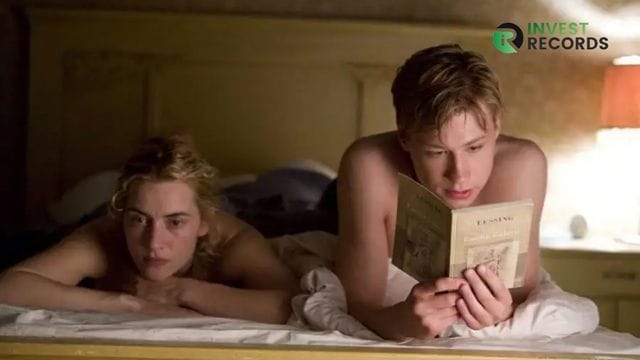Is The Reading Movie Based On True Story?
Is The Reading Movie Based On a True Story? Stephen Daldry’s “The Reader” portrays the captivating story of a German lawyer named Michael Berg (Ralph Fiennes) who has an affair with a considerably older woman (David Kross) when he is 15 years old (Kate Winslet).
Michael reads to Hanna from his literary works after they engage in sexual activity in Hanna’s place. After receiving a promotion from the tram company’s office, Hanna abruptly leaves everything and everyone behind.
A few years later, while attending a trial as part of a seminar at Heidelberg University Law School, Michael encounters her as one of the war crimes defendants.
Michael is horrified to discover that Hanna was an SS or Schutzstaffel guard at a Nazi concentration camp. Michael soon discovers that Hanna is concealing a secret that could rescue her at trial.
Kate Winslet (who also won the Academy Award for Best Actress), Ralph Fiennes, and David Kross deliver outstanding performances that imbue ‘The Reader with agonizing emotions and tragic tragedies.
If you are curious as to whether or not the plot of the 2008 film is based on actual events, we are here to help.
Is The Reading Movie Based On a True Story?
“The Reader” is inspired in part by a true event. The screenplay is an adaptation of Bernhard Schlink’s 1995 German novel of the same name.
The novel is regarded as a parable that addresses the complications that post-war German generations encountered when attempting to comprehend the Holocaust.
Professor Bill Niven, a specialist on modern German history, remarked that the character of Hanna clearly resembled Ilse Koch, commonly known as the “B*tch of Buchenwald.”
Despite the fact that Schlink never disclosed the basis upon which he created Hanna, Schlink’s character has been compared to Koch’s.

Niven stated that no other known female camp guard comes close to equal Schmitz. Ilse was also known as “The Witch of Buchenwald,” “The Beast of Buchenwald,” “Queen of Buchenwald,” “Red Witch of Buchenwald,” and “Butcher Widow” due to her transgressions.
Ilse, like Hanna, was sentenced to life imprisonment before committing suicide. Ilse was married to Karl-Otto Koch, the commandant of the Nazi extermination camps. Ilse was also one of the first notable Nazis tried by the United States military. According to the stories of survivors, her acts were regarded as “tragic.”
The Reading Movie Plot
According to stories, Ilse used to ride through convicts on her horse and once repeatedly trampled on the face of a man. William Gellinick, a prisoner who worked in the pathology laboratory at Buchenwald, said that he heard Ilsa suggest that it was time for an “old man to grovel a bit.”
That man was made to continually roll up and down the slope, suffering injuries that led to his death. In German society after World War II, Ilse Koch was known as “the concentration camp murderess.”
According to witnesses, Ilse’s tactics were so painful that Nazi leaders were compelled to chastise her. Reading brought Michael and Hanna together in the film.
According to Niven, Ilse had an illegitimate son named Uwe who wrote poems to his mother while she was incarcerated. If Ilse struck the convicts with a riding crop, Hanna hit Michael with a belt in the book.
The inmates assumed that Hanna selected female inmates for sexual reasons. The accusation against Ilse was that she had an affair with the convicts. Hanna and Ilse both came from impoverished backgrounds and adored Hitler.
Uwe was taken from Ilsa following his birth and placed for adoption. He used to visit her in the Bavarian prison but vanished following Ilse’s passing. In the film, Michael subsequently discovers Hanna’s existence as an SS guard.
Later in life, Uwe also learned about her mother’s identity and crimes. While comparisons have been made between Hanna and Ilse, Michael and Uwe cannot be compared in the same way. Michael is Hanna’s boyfriend, while Uwe was Ilse’s son.
In addition, Michael is a totally imaginary character who acts as a prism through which we might examine the past.
This implies that the affair between a young man and an older woman is also fictional. Real is the impact of the Holocaust on the population. In ‘The Reader,’ Hanna informs Michael, “It doesn’t matter what I feel, and it doesn’t matter what I believe.

The dead continue to be dead.” One can argue about the past, identify the offenders, or evaluate the veracity of a fact, but in the end, a sense of melancholy settles in the mind because the past cannot be revisited.
Read More – Is Knock at the Cabin Based on a True Story? Everything We Know!
Frequently Asked Questions
What is the Plot of the Film the Reader?
In 1958, Michael Berg, a German attorney, begins a sexual relationship with an older lady, Hanna Schmitz, when he is 15 years old. She vanishes, only to reappear years later as one of the defendants in a war crimes trial based on her acts as a Nazi concentration camp guard.
How Did the Reader End?
Michael takes his adult daughter Julia to Hanna’s grave and tells her about this hidden chapter of his life. Michael’s decision to reveal his lifetime secret may liberate him to love better in the future, as implied by the conclusion.
Why Was Hanna Imprisoned in the Reader?
During a death march, they are accused of turning their backs on 300 female inmates who burned to death in a sealed church. The two survivors, a mother, and her daughter, attest that the daughter wrote a book accusing the guards. Hanna is one of the accused.
Read More
- Is Narvik Movie Based On a True Story? Release Date Update!
- Who is War Dogs Based on: Is War Dogs Based on a Real Story?
Summary
You can help us produce more articles like this by spreading the word. Feel free to ask questions or make observations regarding the article in the space provided below. Certainly, share your thoughts in the space provided below. We appreciate you taking the time to submit comments, and we promise to respond thoroughly.



Comments are closed.